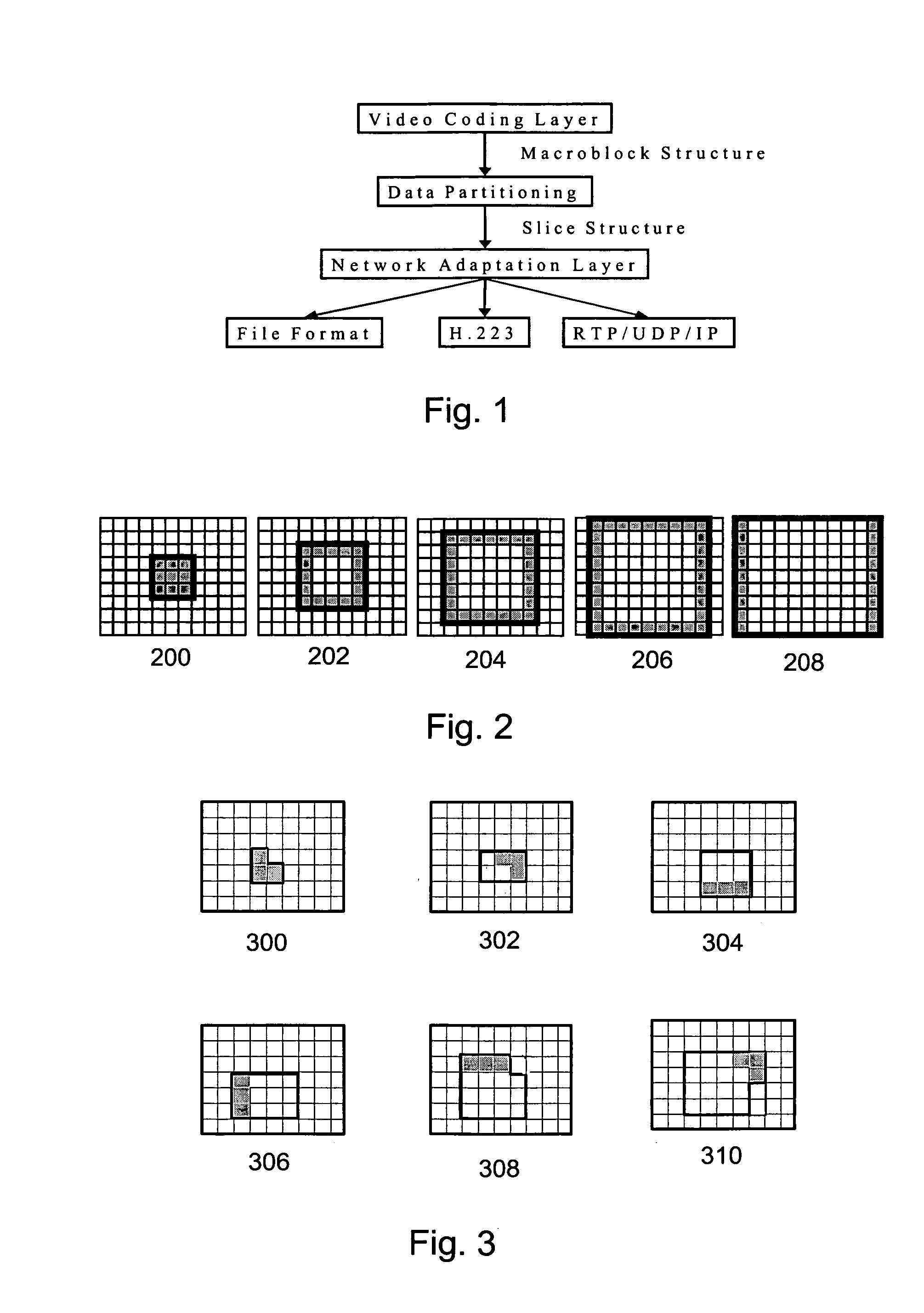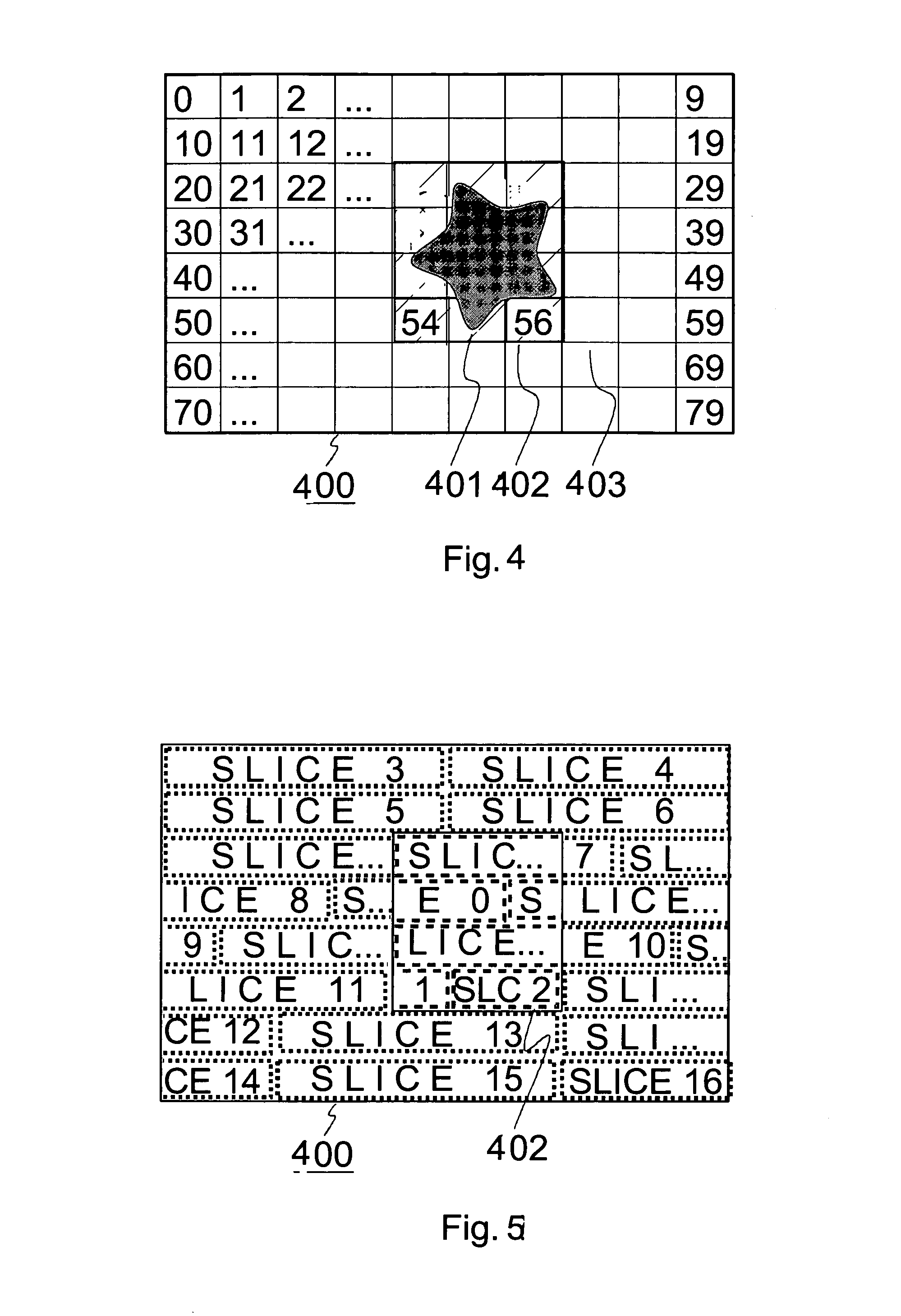Indicating regions within a picture
a region and picture technology, applied in the field of video coding, can solve the problems of consuming more bandwidth, encoding of frequent intra frames in the video sequence, and inability to correctly decode frames depending thereon
- Summary
- Abstract
- Description
- Claims
- Application Information
AI Technical Summary
Benefits of technology
Problems solved by technology
Method used
Image
Examples
Embodiment Construction
[0036] The invention is applicable to all video coding methods using region-based motion-compensated temporal prediction. The invention is particularly applicable to different low bit rate video codings typically used in limited-band telecommunication systems. These include for instance ITU-T standards H.263 and H.26L (later possibly H.264), which is currently being standardized. In these systems, the invention is applicable for instance in mobile stations, allowing
[0037] The following is an exemplary illustration of the invention using the JVT / H.26L video coding as an example. The JVT / H.26L will be described to a detailed level considered satisfactory for understanding the invention and its preferred embodiments. For a more detailed description of the implementation of JVT / H.26L, a reference is made to the document: Joint Video Team (JVT) of ISO / IEC MPEG and ITU-T VCEG, DRAFT ISO / IEC 14496-10:2002 (E) “JVT Working draft 2, Release 7”.
[0038] The conceptual structure of the JVT / H.2...
PUM
 Login to View More
Login to View More Abstract
Description
Claims
Application Information
 Login to View More
Login to View More - R&D
- Intellectual Property
- Life Sciences
- Materials
- Tech Scout
- Unparalleled Data Quality
- Higher Quality Content
- 60% Fewer Hallucinations
Browse by: Latest US Patents, China's latest patents, Technical Efficacy Thesaurus, Application Domain, Technology Topic, Popular Technical Reports.
© 2025 PatSnap. All rights reserved.Legal|Privacy policy|Modern Slavery Act Transparency Statement|Sitemap|About US| Contact US: help@patsnap.com



